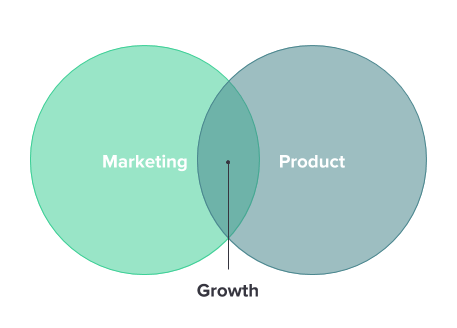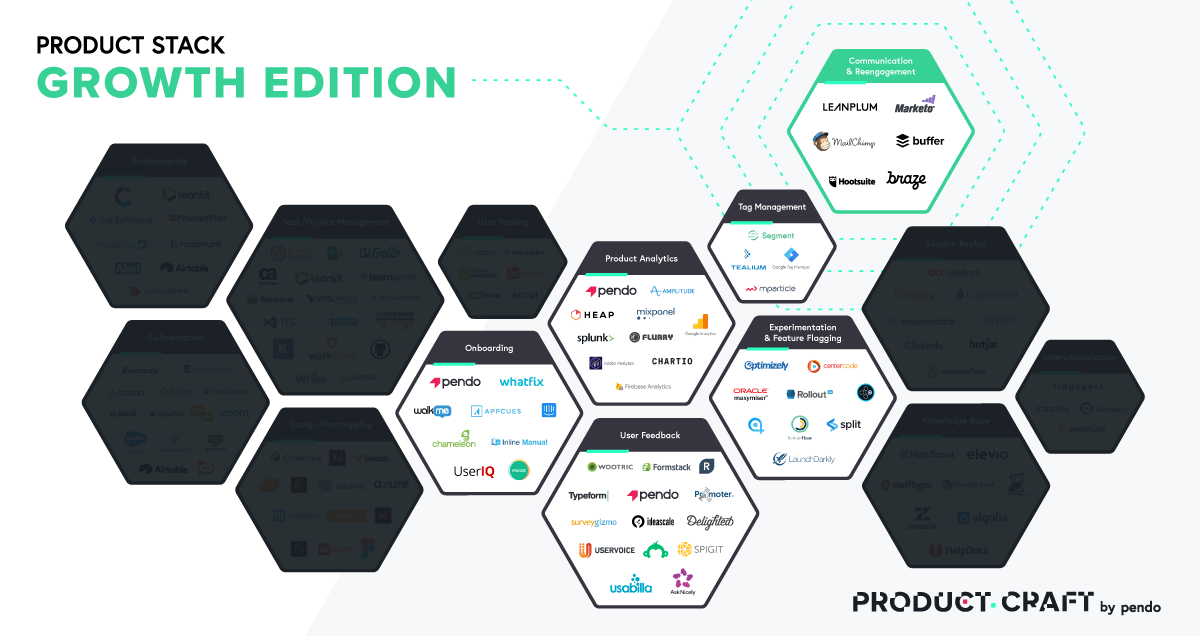Tech stacks are like ice cream flavors – everybody has their favorite. Even within roles and functions, bitter arguments erupt about which email, collaboration, or product management tool is best. Some of this is driven by individual preference, but it also reflects the fact that individuals – even those in the same functional role – can have specific responsibilities that require specific tools.
Back in April, ProductCraft published the product stack, an initial cut at the tools product people use. The list was crowd-sourced from attendees at the Pendomonium conference, and refined with feedback from ProductCraft readers. The result: a broad, exhaustive list of categories and tools (all 31 flavors) that product teams utilize in their day-to-day.
The other result: A lot of (sometimes passionate) feedback about what does and doesn’t belong in the product stack. The discussion has been great – and a clear reflection of the different product roles that read and contribute to ProductCraft.
To bring some of these distinctions to light, we’ve created several views of the stack for different product roles. Like the rocky road and mint chocolate chip sundae, these views focus on a core subset of tools that help specific teams get jobs done.
First up: the growth PM stack.
What’s a “Growth” Product Manager?
Your familiarity with that term may depend on where you live. The growth PM is an emerging role that focuses on growing (obviously) a product’s revenue and user base. Growth PMs are more prevalent in West Coast companies, but more and more digital product companies are staffing teams with this role. They play an important part in figuring out product monetization strategies and scaling new products “across the chasm” from earliest adopters to a large, mainstream user base.
Isn’t that marketing’s job? Yes and no. Growth roles live at the intersection of product and marketing. They include promotional aspects such as user acquisition, but they also focus closely on the customer experience in the product, how (and if) customers realize value from the product, and how to translate that value into retention and revenue.
The role reflects that fact that boundaries between marketing and product are blurring. As more and more of the customer journey moves into the product (demo, onboarding, education and training, etc.), traditional organizational silos break down. The growth role focuses on optimizing all aspects of the customer journey to make the product more successful.
Growth PMs tend to adhere closely to “lean product” principles – running multiple small experiments and campaigns targeted at different parts of the customer journey. As a result, they make heavy use of data, analytics, and other technical tools as part of their daily work.
The Growth Product Stack
Which tools are most relevant to the growth PM? Here is the slice of the product stack that’s most relevant to the growth team:
- Product Analytics: Growth as a role is entirely data-driven. Each product iteration or customer campaign is designed to test something: Will prospective users be more likely to sign up? Will freemium users upgrade? Will customers be willing to pay for this feature? Without full visibility into every activity that users take in the product, it is extremely difficult to assess the impact of experiments. Product analytics tools are often the first investment that growth teams make.
- User Feedback: Qualitative user feedback is the other critical input that growth PMs rely on to assess their tests. Sometimes simple questions to users like: Is this valuable? Why did you switch plans? provide the most valuable insights. This category of tools allows PMs to easily reach to users across channels, gather, and manage this feedback.
- Experimentation & Feature Flagging: It goes without saying that a role that relies heavily on experimentation will need a set of tools to run those experiments. This category includes A/B testing tools for simple web and front-end messaging variants and more engineering-aligned tools that allow product teams to roll out whole features to specific users or user segments. Integrating these tools with product analytics and feedback solutions create the tight closed-loop process that allows growth teams to quickly run, assess, and iterate in-product tests.
- Onboarding: Onboarding might seem like an odd solution category for teams focused on experiment-driven growth, but remember that growth PMs are looking across the entire customer lifecycle. One of the most critical areas for growth is the early stages of the customer experience in the product (POC, trial, freemium). Optimizations that shorten trial times, or increase conversion rates can have an outsized impact product and revenue growth.
- Tag Management: Growth PMs are heavy tool users – they use more tools in their day to day that other product roles, and they are more likely to experiment with new tools. As a result, the ability to quickly add new tools to their stack, and integrate data flow across them is a critical capability. The ease of deployment and integration makes tag managers a no-brainer component of the growth stack.
What’s Different About the Growth Product Stack?
So far we’ve highlighted categories within the existing product stack that are super relevant to growth PMs, but savvy observers will notice the introduction of a new solution category in the growth stack: communication and re-engagement.
This category pulls directly from the adjacent marketing stack and reflects the blurred lines between traditional marketing, product, and growth roles. Just as traditional marketing activities are becoming part of the product experience, the product experience is expanding into marketing channels.
Growth PMs take advantage of all communication channels to reach customers. This includes email, push, and even social outreach to re-engage dormant users, or increase adoption.
These “out-of-app” communications leverage marketing automation, mobile messaging, and social curation tools – often integrated directly with product functions, or tied together with API tools like Zapier.
What’s in Your Growth Product Stack?
What tools do you and your team use in pursuit of growth? Are they captured in this version of the stack? Let’s continue the conversation.
Please share, comment, and weigh in on what we’ve missed.


![[object Object]](https://cdn.builder.io/api/v1/image/assets%2F6a96e08774184353b3aa88032e406411%2F16b6f2565d1d4a5585db322386f9be7f?format=webp)
![[object Object]](https://cdn.builder.io/api/v1/image/assets%2F6a96e08774184353b3aa88032e406411%2F728d67faa5f64299b8f8f0b138881fb5?format=webp)
![[object Object]](https://cdn.builder.io/api/v1/image/assets%2F6a96e08774184353b3aa88032e406411%2Fc08c4160a2724c4fa3d365eb43791b09?format=webp)

